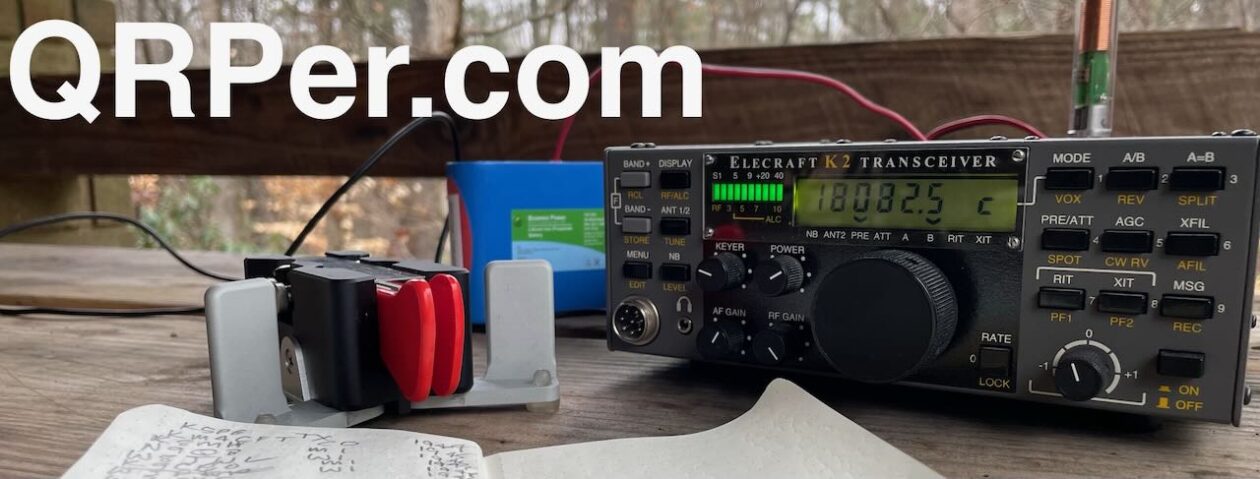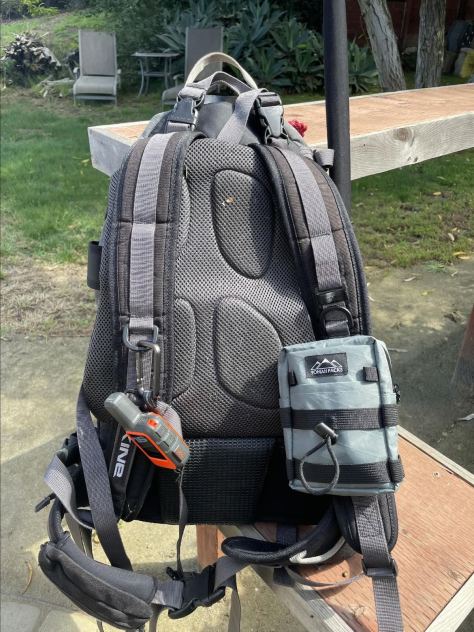The Arizona 10-Point Madness Summit-to-Summit Event
 “How can I accumulate a bunch of summit-to-summit points all at once, for Summits on the Air?” This was a question Pete Scola WA7JTM had been pondering for years. He initially thought it might be fun to choose several 10-point summits that were near each other, have a person operate on each summit, and then rotate to a new summit every so often. Eventually, this idea gave way to the Arizona 10-Point Madness Summit to Summit event. With an invitation from Pete, all willing SOTA participants gathered on a 10-point summit on September 19th, 2018, and 10-Point Madness was born!
“How can I accumulate a bunch of summit-to-summit points all at once, for Summits on the Air?” This was a question Pete Scola WA7JTM had been pondering for years. He initially thought it might be fun to choose several 10-point summits that were near each other, have a person operate on each summit, and then rotate to a new summit every so often. Eventually, this idea gave way to the Arizona 10-Point Madness Summit to Summit event. With an invitation from Pete, all willing SOTA participants gathered on a 10-point summit on September 19th, 2018, and 10-Point Madness was born!
The Arizona 10-Point Madness Summit to Summit event is a casual on-air gathering, where Summits on the Air participants set up their ham radio station on the top of summit . . . at approximately the same time. Operators are on simultaneously so that there is an overwhelming availability of summit-to-summit contacts to be made. This event occurs every year on the first Saturday of October.

There was a focus on 2-meter contacts the first year we did this. We learned quickly during the 2018 inaugural event that it was true madness for 31 ham radio stations to contact 26 nearby summits all at the same time, especially on 2 meters. We tried alternate 2-meter frequencies and even considered a net control operator. However, in the end, we learned to just wait patiently for our turn to call for contacts on 2-meters, or if it was extra busy, we just moved off to HF for a while and returned later. As a courtesy, we now monitor 2 meters and return to it throughout the event to give the operators a chance to come and go.

That first year was amazing.
We collectively made 1104 contacts, 354 of which were VHF. And yes, we scored a lot of summit-to-summit points. We averaged 140 points each, with a grand total of 4324 s2s points for all the Arizona stations. We announced the event to several online platforms and invited others to participate, and had a few people join us from outside of Arizona. All of them had fun and saw good results as well.
Our 6th annual event concluded a few weeks ago. Participation has been steady in Arizona but we have seen an increase outside of Arizona. We had about the same number of Arizona participants as years past, but total contacts increased to 1403. The average s2s points per participant increased to 169, with a grand total of 4906 s2s points. I was amazed that Keith KR7RK earned 400 s2s points this year for this event – a new record, I think. These are only numbers for Arizona participants.
I read on social media that Josh WU7H, who was participating from Washington state, had 55 total s2s contacts and only a fourth of them were from Arizona. We received some statistics from stations in Georgia, South Carolina, Wisconsin, Texas, Nevada, Washington, Oregon and more. It is a lot of effort to compile the statistics but it would be interesting to include people outside of Arizona in the future.

Here are a few things that have stood out to me over the past 5 years for this event:
In 2019, Josh WU7H and DJ WW7D participated from Washington. They won the award for most challenging activation in my opinion, operating from a snow packed summit in below freezing temperatures. But that didn’t deter them! They continue to come back year after year. They are tough!
In 2022 my friend Adam K6ARK was participating on a summit in California. I was able to make a 2-meter CW and SSB contact with him from my summit, 327 miles away.
Several others in Arizona also made contact with him. While not record breaking, this is long haul for 2-meters. And this year, I was able to make 19 DX contacts with one summit-to-summit into Germany. It seems like there are a lot of DX contacts to be made every year, but this was a record for me.
Finally, this year Pete WA7JTM made a contact on every single band from 1296 MHz down to 1.8 MHz. That’s 16 different bands. How amazing is that?
The point is, you can make this event into whatever you want. Experiment and try new things because there are people listening. And of course, you do get a ton of summit-to-summit points.


Dave AE9Q sent an email out to the Arizona participants and inquired about the radios, antennas, and power sources used for the event and as you can probably guess, the list was very diverse. I’m not exaggerating. Just about every QRP HF radio, VHF/UHF handheld, Antenna, and power source you can think of was used – Log periodicals, mono-band double-bazookas, double zepps, whips, Yagi’s, end-feds, QRP and QRO HF radios of all types, HT’s with microwave capabilities, mobile vhf radios, amplifiers, lipo and lifepo batteries. The list is long.


We recognize that other SOTA associations do similar events, like the Colorado 14er event and the Pacific Northwest Not Quite Fourteener event, to name a couple. These are all great opportunities to get on the air and have fun with QRP radio in the field.
I’m sure you have heard about how amazing the SOTA community is. If you get out on the summits or frequently chase, your call sign becomes familiar to others. So much so that you feel a personal connection and sense of comradery every time you make contact with them. During these events you see many of your good on-air radio friends. It’s like a reunion.
The Arizona SOTA association thanks the many chasers and participants outside of Arizona who make this event more and more exciting every year. We hope to see even more participate next year. Just pick a summit, put your alert on the sotawatch.sota.org.uk web page, get on top of the summit and have a blast!
Readers: Do yourself a favor and subscribe to Charlie’s YouTube channel Red Summit RF. It’s chock-full of SOTA radio goodness. I’m also a fan of the All Portable Discussion Zone podcast–subscribe if you haven’t already!




































































